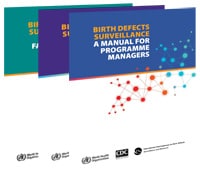CDC’s Work to Understand and Prevent Neural Tube Defects (NTDs)

CDC has led the way in folic acid research. Folic acid is known to reduce the risk of a pregnancy being affected by a neural tube defect when a woman takes 400 micrograms of folic acid each day before and during early pregnancy. Neural tube defects are major birth defects of a baby’s brain and spine.
CDC monitors and researches folic acid use among women of reproductive age to
- Understand the benefits of consuming folic acid;
- Investigate possible causes of and risk factors for neural tube defects; and
- Develop programs to prevent neural tube defects from occurring.
Folic acid educational materials
CDC’s FREE folic acid educational materials encourage all women of reproductive age to consume folic acid. They are available in English and Spanish.
Folic acid materials order form >>
Tracking and Research
National Birth Defects Prevention Study (NBDPS)
The National Birth Defects Prevention Study (NBDPS) is one of the largest studies on birth defects ever undertaken in the U.S. The NBDPS has made key contributions toward understanding the causes of birth defects. It has helped researchers to identify potential risks for having a birth defect. The study interviews stopped in 2013, but researchers continue to analyze this rich source of information.
The study’s current folic acid research activities include assessing
- Whether consuming folic acid lowers the increased risk for certain birth defects in mothers with diabetes;
- How variations in genes that help the body process folate impact a baby’s risk for birth defects; and
- The impact of overall diet quality, including folic acid intake, on a baby’s risk for birth defects.
National Health and Nutrition Examination Survey (NHANES)
The National Health and Nutrition Examination Survey (NHANES) is a program of studies designed to assess the health and nutritional status of adults and children in the U.S. The survey combines interviews and physical examinations. CDC uses information from NHANES to look at how much folic acid people get from their diet and their actual blood folate levels.
State-based Birth Defects Tracking Systems
Birth defects tracking systems are critical to track birth defects. CDC uses the information collected through these systems for prevention and referral activities.

Birth Defects Surveillance Toolkit
The Birth Defects Surveillance Toolkit is a guide to develop and strengthen birth defects surveillance programs in low- and middle-resource countries. CDC, the World Health Organization and the International Clearinghouse for Birth Defects Surveillance and Research, created the Toolkit.
Learn more about the Birth Defects Surveillance Toolkit >>
Behavioral Risk Factor Surveillance System (BRFSS)
The Behavioral Risk Factor Surveillance System (BRFSS) collects health information. CDC uses information from BRFSS to assess health behaviors related to having a healthy pregnancy.
Pregnancy Risk Assessment Monitoring System (PRAMS)
The Pregnancy Risk Assessment Monitoring System (PRAMS) is a surveillance project of CDC and state health departments. PRAMS collects state-specific information on maternal attitudes and experiences before, during, and shortly after pregnancy.